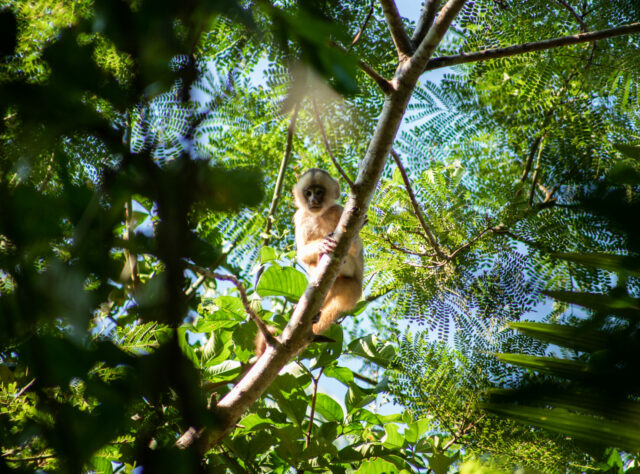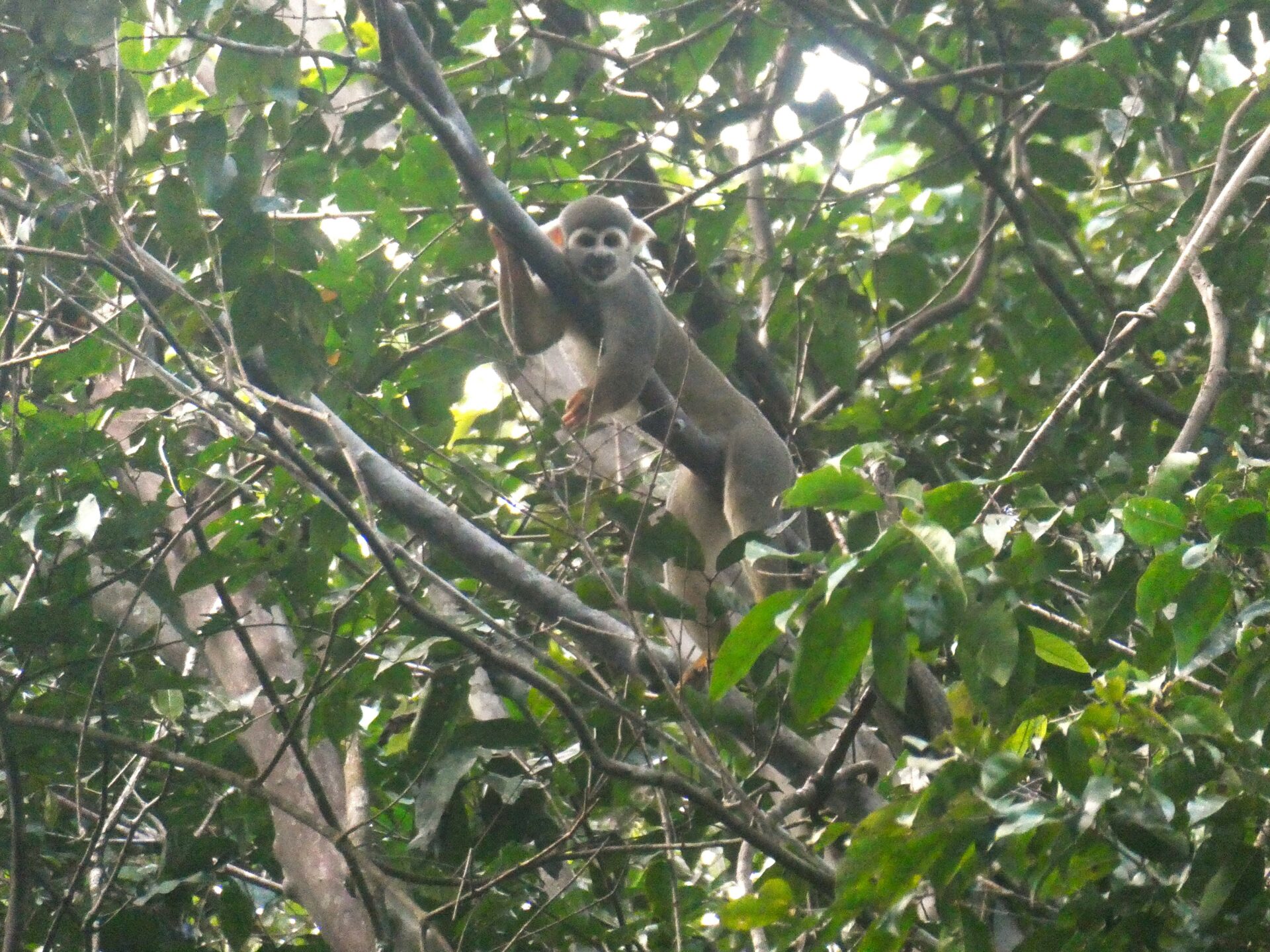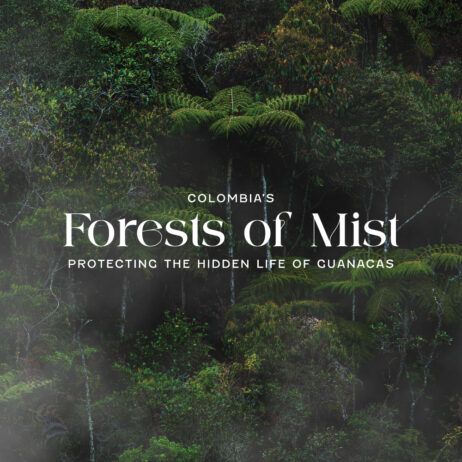
With support from WLT-partner AMPA, animals like this young Marañón White-fronted Capuchin have a haven in which to learn, play, and explore, safe from hunting. Credit: AMPA
Filling the vast Rainforests of South America’s Amazon Basin with their chatter are clusters of Capuchin Monkeys. Unfortunately, you might only recognise them as guest stars from film and television, such as the Monkey ‘Marcel’ from Friends. Though they are quite common throughout the Amazon, many species of Capuchin live only in small pockets of rainforest. The loss of these areas has left some species losing their habitat. Without it, they are forced closer to towns and settlements, where they are hunted for food.
A safe home for our clever friends
One such species is the Marañón White-fronted Capuchin, with their wiry reddish-brown bodies and tufted cream fur framing sweet faces. This young Monkey was recently caught on camera in the 6,000-plus hectares of protected rainforest known as the Concesión para Conservación Áreas Inundables del Bajo Huallaga (CCAIBH), supported by WLT. Unfortunately, their numbers are declining and thought to be Near Threatened. But there is hope- they are being spotted more and more regularly within the CCAIBH, also known as the Concession for the Conservation of Flood Plains of the Lower Huallaga. With the help of our partner Amazónicos por la Amazonía (AMPA), this wet, teeming ecosystem in the Peruvian Mountains is safe from the relentless hunting and logging that threatens so much of the Amazon Rainforest and its wildlife.

The CCAIBH is voluntarily managed by the Agro Bio Forestal El Porvenir Pelejo Association (ABIOFORP), a collective of local people dedicated to protecting the rainforest in which they live. Credit: AMPA
AMPA recently reported to WLT “Carrying out patrols in the fragile ecosystem (CCAIBH) continues to be one of the best strategies to contribute to the protection of the forest, it allows ABIOFORP to control the occurrence of possible threats and take action against them. On some occasions, the mere presence of the partners in the area has served to deter the entry of third parties for illegal logging purposes, since they see there is management of the area and people patrolling, responsible for its administration.”
So what do we know about these elusive forest dwellers?
Swinging through the tree canopy on long limbs, searching for berries, nuts, and birds eggs, Marañón White-fronted Capuchins mostly prefer the treetops. When they do brave the forest floor to forage, their keen senses keep them alert, ready to leap back into the safety of the branches at the snap of a twig. Like all Monkeys, they share almost 97% of their DNA with humans. But Capuchins are among the most intelligent and adaptable of all primates in South America. As well as using rocks as tools to crack open the shells of nuts, Capuchins have been spotted using rocks as weapons to throw at predators (and at each other if an argument gets particularly heated). They have even learned how collect drinking water from streams and puddles with cups made of fresh leaves.

Away from human settlements where they are hunted for food or captured as pets, Marañón White-fronted Capuchins and their many friends, like this Black-capped Squirrel Monkey, can forage the forest floor, while their little ones perch in the trees. Credit: AMPA
Like most Capuchins, Marañón White-fronted Capuchins live in troops of 15-30. Often, they will form groups with other Monkey species living nearby, knowing that there is safety in numbers. Being very social animals with close family bonds, they like to groom each other to relax. They have even learned to crush centipedes into paste and smother themselves in it to avoid mosquito bites. Young Capuchins like this one will have spent their newborn weeks riding on their mother’s back by clinging on to their fur. Jumping between branches, the younger Monkeys can play and explore the reserve’s protected rainforest, always closely watched over by nearby members of the troop.
How can you help?
By supporting WLT’s Action Fund, species like the Marañón White-fronted Capuchin and countless others can have room to thrive. The Action Fund can provide urgent resources wherever and whenever they are most needed. It is essential to the conservation of areas such as AMPA’s CCAIBH, where seasonal flooding becomes harder to manage due to extreme weather driven by climate change.


